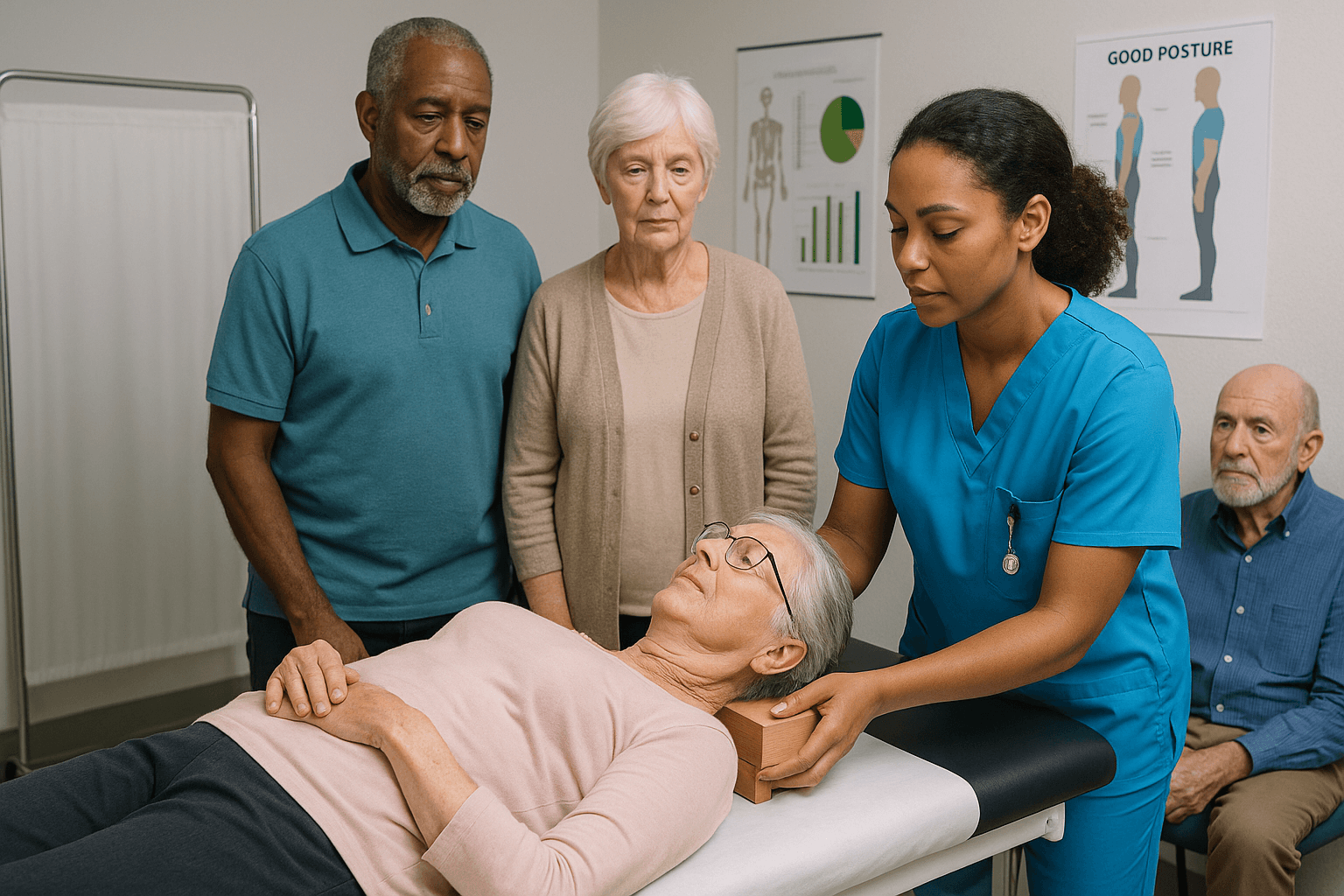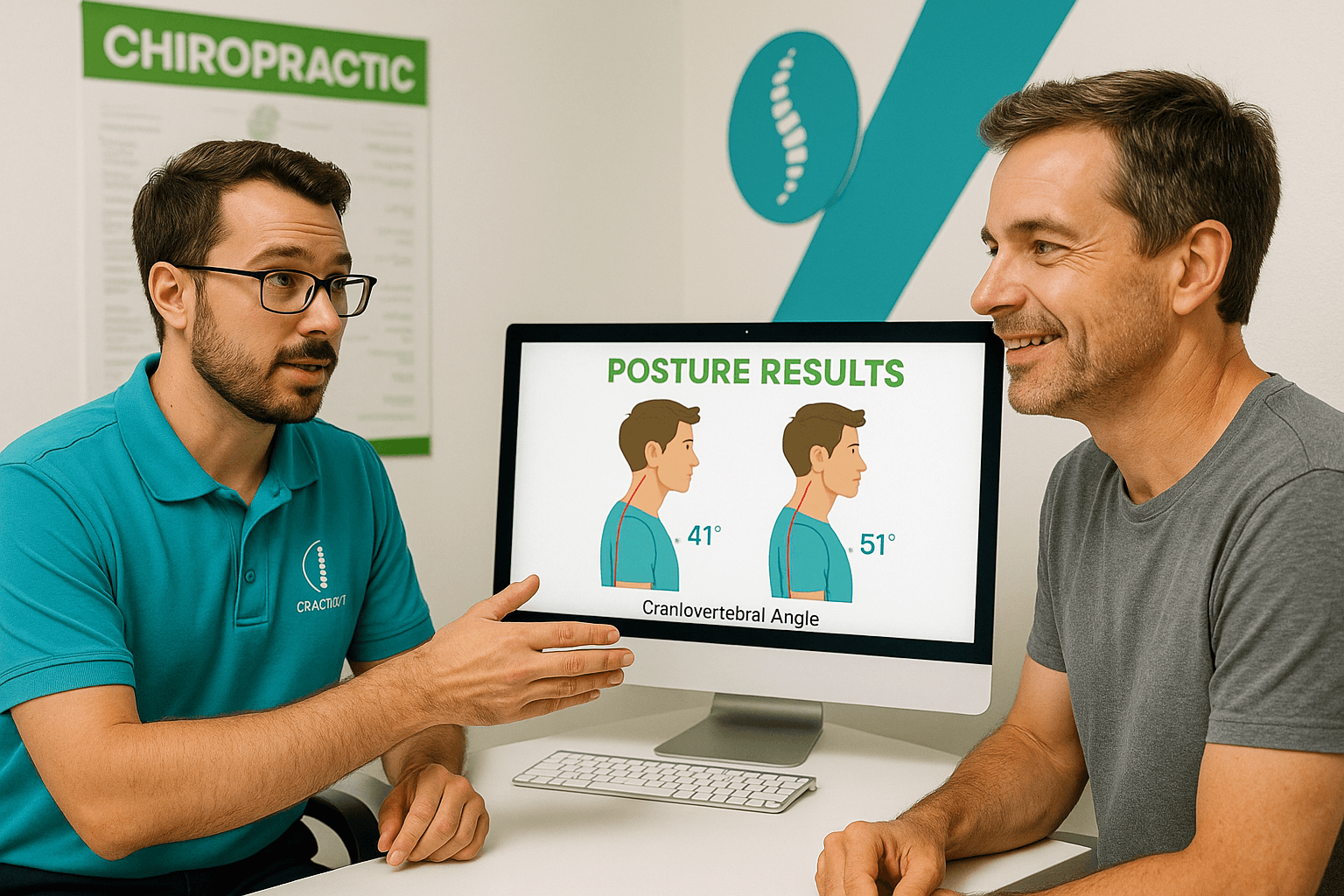Sometimes, life can feel like a constant uphill battle—especially for kids dealing with complex health challenges. This is the story of an 11-year-old boy who struggled daily with Autism Spectrum Disorder (ASD), Attention Deficit Hyperactivity Disorder (ADHD), and Ehlers-Danlos Syndrome (EDS), a condition that makes joints extra loose and connective tissues fragile. His journey was written up as a case study in the Asia-Pacific Chiropractic Journal. The full article can be found here: https://www.apcj.net/papers-issue-6-1/#CobbQoL.
His mum described his life as “terrible for an 11-year-old”—he was always tired, unstable on his feet, and often unable to sit upright for even a minute. On top of that, he had trouble with self-care tasks like tying shoes or opening bottles. He struggled with breathing, balance, posture, and even eating.
But after beginning Advanced BioStructural Correction™ (ABC™) chiropractic care, his life started to change—dramatically.
Jump To:
TLDR – Quick Guide
At a glance:
- Who: An 11-year-old boy with ASD, ADHD, and EDS
- Symptoms: Chronic fatigue, poor posture, instability, pain, and motor delays
- Chiropractic Solution: ABC™ technique applied with extra care due to EDS
- Results:
- First deep breath after one adjustment
- Improved balance and posture
- Reduced pain
- Boosted confidence and focus
- Greater independence at school and home
- First deep breath after one adjustment
Detailed Breakdown
Understanding the Challenges
This boy’s situation was complicated:
- Autism Spectrum Disorder (ASD): Made social interaction and daily routines difficult.
- ADHD: Added hyperactivity and focus issues.
- Ehlers-Danlos Syndrome (EDS): Caused joint hypermobility, weak connective tissues, and pain.
- Motor delays: He had trouble with both big movements (like walking or balancing) and small ones (like buttoning clothes).
He also had chronic pain, rating it 6–7 out of 10 most days. His mum said the smallest gust of wind could knock him over, and he couldn’t stay upright in a chair. He even preferred lying on the floor because sitting felt so unstable.
This wasn’t just about health—it was about quality of life. He was becoming more aware of his differences compared to other kids, and it was affecting his mood and confidence.
The Chiropractic Assessment
When he first visited the chiropractor, a detailed examination was carried out:
- Posture analysis using digital scans showed a slumped stance, forward head posture, and a leaning to one side.
- Spinal scans revealed flattening of his neck and upper back curves and abnormal weight-bearing in the lower spine.
- Range of motion tests showed stiffness in his neck and hips.
- General observations: He had slow wound healing, easy bruising (signs of EDS), and poor balance.
The chiropractor decided to use Advanced BioStructural Correction™ (ABC™), a gentle, hands-on method that works on releasing body tension and correcting posture. Because of his Ehlers-Danlos, adjustments were carefully modified to avoid stressing fragile tissues.
The Care Plan
His plan started with:
- Two visits per week for 12 weeks
- Reassessments every few weeks to track progress
- A second 12-week plan at the same frequency after the first one finished
The main goals were:
- Improve posture and stability
- Reduce pain and reliance on external supports like orthotics
- Increase range of motion
- Support better breathing and energy
Home advice was also included—like how to sit properly, choosing supportive shoes, and setting up his sleeping space with the right mattress and pillow.
The Results
From the very first adjustment, something amazing happened:
- He told his mum, “Mum, I can breathe. I can take a full breath.”
This was huge. He had never been able to take deep, full breaths before.
As care continued, more changes appeared:
- Better posture: He no longer hunched over or leaned heavily to one side.
- Improved balance: He could sit through the school day without collapsing or falling over.
- Less pain: His discomfort reduced as his spine became more stable.
- More energy and confidence: His mood brightened, and he was more willing to try new things.
- Fewer falls: He could now stand and move with more stability.
- Daily life improvements: He became more independent with tasks that once felt impossible.
His mum reported that he was “happier, more active, and more stable overall.” His teachers noticed he could focus and stay upright for longer at school.
Why This Matters
This case is important for a few reasons:
- Hope for complex cases: Kids with multiple diagnoses like ASD, ADHD, and EDS often struggle to find effective support. This shows chiropractic care can be part of a team approach.
- Gentle adjustments are possible: Even with Ehlers-Danlos, where tissues are fragile, modified chiropractic care can be delivered safely.
- Posture affects more than appearance: Fixing structural issues improved not only how he looked but also how he breathed, balanced, and interacted with the world.
- Quality of life improved: For this boy, chiropractic care wasn’t about curing autism or EDS. It was about making his daily life easier, safer, and more enjoyable.
Where Advanced BioStructural Correction™ Fits In
The chiropractor in this case used ABC™, a unique method focused on correcting spinal structure and releasing tension the body can’t fix by itself.
ABC™ doesn’t claim to cure autism, ADHD, or EDS. But by helping the body return to a more natural alignment, it can reduce stress on the nervous system and improve how the body functions. For this boy, that meant better breathing, posture, and independence—things that dramatically boosted his quality of life.
Final Thoughts
This story shows how chiropractic care—especially with techniques like ABC™—can make a meaningful difference in the lives of kids with complex health needs. While it’s not a cure, it’s a powerful support tool that can improve posture, comfort, and daily function.
For this 11-year-old, chiropractic care gave him something priceless: the ability to breathe fully, sit through school, and enjoy being a kid again.
Key Takeaways
- Complex conditions don’t mean helpless situations. Chiropractic care helped a child with ASD, ADHD, and EDS experience real improvements.
- Structural alignment plays a bigger role than most realize—it impacted everything from breathing to balance in this case.
- ABC™ chiropractic care was safely tailored to his EDS, showing that even fragile conditions can benefit from gentle, hands-on care.
- Improved physical comfort led to better confidence, mood, and school engagement.
- Chiropractic is a complementary therapy—it works best when integrated into a broader care plan.
FAQs
Can chiropractic care help children with autism and ADHD?
Yes. While chiropractic doesn’t treat these conditions directly, it can support physical comfort, posture, and nervous system balance—factors that influence focus, mood, and energy levels.
Is chiropractic care safe for children with Ehlers-Danlos Syndrome?
Yes, if performed by a skilled chiropractor who understands the condition. Techniques like ABC™ can be adjusted to avoid stressing connective tissues, making it a safe option.
What is Advanced BioStructural Correction™ (ABC™)?
ABC™ is a chiropractic method that corrects structural misalignments the body can’t fix on its own. It helps the spine and nervous system function better, without forceful adjustments.
How fast can you see results?
This boy felt a major difference—better breathing—after one session. While every case is different, consistent care over several weeks often brings measurable improvements.
Should chiropractic care replace traditional therapies?
No. It should be part of a collaborative care approach, alongside behavioral, occupational, or speech therapies. It enhances what other therapies are already working toward.






